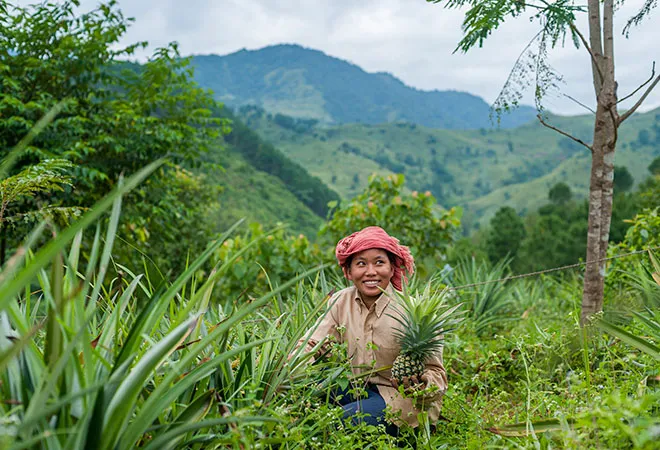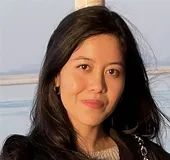-
CENTRES
Progammes & Centres
Location
Tackling gender-based discriminations require transformative solutions, possible only if women are considered equal participants in the development process rather than passive beneficiaries.
 This article is part of the series — Catalysing Change: Women-led Development in the Decade of Action.
This article is part of the series — Catalysing Change: Women-led Development in the Decade of Action.
The first year of the ‘Decade of Action,’ a call by world leaders to accelerate efforts to achieve the Sustainable Development Goals (SDGs) by 2030, coincided with the outbreak of the deadly COVID-19 pandemic. With more than 2.5 million people succumbing to the virus so far, and possibly a lasting devastating socioeconomic impact, it has become even more imperative that the 2030 Agenda is prioritised by nations worldwide. The SDGs, a broader and more transformative version of the Millennium Development Goal (MDGs), were adopted in 2015 to address the issues plaguing the three dimensions of development: Economic growth, social development and environment sustainability. The 17 global goals were devised in a holistic manner in order to be inclusive, empowering, and gender-sensitive. What differentiated the SDGs from their previous incarnation was the global commitment to achieving visible gender equality, integrated and ingrained into all the SDGs apart from the standalone Goal 5. It was universally acknowledged that a sustainable future was possible only if women were empowered socially, politically and economically.
Progress on the goals had been uneven and slow even before the COVID-19 crisis. Goal 5, pertaining specifically to women empowerment and gender equality, has proven to be particularly challenging for many countries, including India. Significant gains have been achieved on a few parameters, such as an improving sex ratio, more girls having access to education and more women serving in positions of leadership. However, these improvements are not reflected in the status of women belonging to the Adivasi and other marginalised communities of the Northeast region. These women, who comprise some of India’s most vulnerable and disadvantaged, are subjected to multiple levels of discrimination and abuse, and suffer from abject poverty, sexual exploitation and lack of access to basic healthcare. As primary caretakers of their families and communities, they are also directly impacted by climate change and environmental degradation, which disrupts the natural resources from which they procure food and water.
Traditionally, the women of this region have been cultivating and managing the local resources through indigenous knowledge acquired over generations of adaptation and experimentation. As natural custodians of the common property resources, immense value is placed on sustainability of resources. However, these traditional livelihood strategies are increasingly coming under threat as environmental conditions continue to deteriorate. In their search for water, food and fuel, women are forced to travel longer distances, thereby, increasing their burden of domestic work. Many a time, they also become the sole wage earner as their spouses fall prey to alcoholism and its concomitant problems. Such circumstances often compel women from the region to migrate and seek economic opportunities outside the region to support their families. Women from Tankhul and Kuki tribes of Manipur are a visible presence as workers and attendants in malls and Chinese restaurants in Gurugram and Delhi. Similarly, women belonging to ex-tea communities and the Muslim community of lower Assam seek employment as domestic labour.
Although the Northeast region on the whole fares better than the rest of the country on certain important indices, including a lower gender gap in literacy and work participation rate, certain paradoxes reveal gendered violence, particularly faced by those from marginalised communities. For instance, data from National Crime Records Bureau’s reports on ‘Crime in India’ indicates a high number of kidnapping cases of women from Assam who are then forced into prostitution. The state also witnesses an alarming number of incidents in which many tribal women are killed in the name of ‘witch hunting.’ Equally vulnerable are the Muslim women of the Char area of Assam who are illiterate and politically disempowered. They are confined to the domestic sphere and restricted from finding ways to gain social, political and economic empowerment, which tends to undermine their value and bargaining power both within and outside their respective communities.
The disruptive effects of the pandemic offer a rare opportunity to radically change the way we approach the concept of development. Tackling gender-based discriminations require transformative solutions, possible only if women are considered equal participants in the development process rather than passive beneficiaries. Unique solutions for achieving sustainable development and climate change mitigation can be reached by incorporating the lived experiences of women, particularly those belonging to Adivasi and other marginalised communities that share a symbiotic relationship with nature. Further, in a world where many socio-cultural and traditional norms seek to dominate and discriminate against women, financial autonomy can be one of the prime drivers in promoting female empowerment. Providing funding and technical support to local women entrepreneurs, who can market their traditional knowledge, and enabling them to participate in global value chains can help in their emancipation. Concerted action is required at all levels of governance and amongst stakeholders to ensure gender-responsive measures that are specifically targeted towards upliftment of marginalised women. Monitoring existing schemes that focus on educating and empowering these women and developing policies that bring in a gendered perspective is key to achieving gender equality. It is only by adhering to the central tenet of the 2030 Agenda, ‘Leave no one behind,’ can India, and the world, truly hope to achieve sustainable development.
The views expressed above belong to the author(s). ORF research and analyses now available on Telegram! Click here to access our curated content — blogs, longforms and interviews.

Tanvi Barua is a Research Consultant at Aide-et-Action Guwahati. She works on issues relating to gender equality education and migration in the North-East.
Read More +